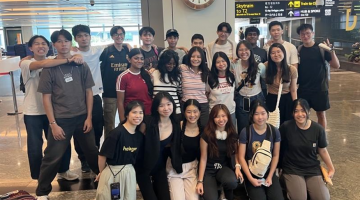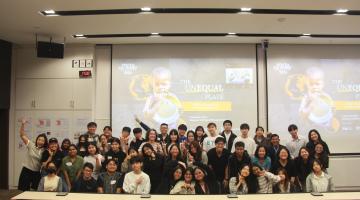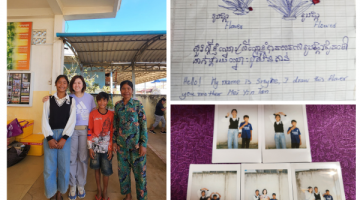Child Sponsorship: 10 Myths Busted

You’ve seen the news, and you know that in lots of places right now, it’s really tough to be a child as the COVID-19 pandemic and its aftershocks ripple across the world.
You want to do something about it and sponsoring a child could be it.
But, maybe you’ve heard comments or read something that questions the development approach or effectiveness of child sponsorship. Friends talking at a get-together, online blogs, social media posts, podcasts or newspaper articles. Some people question if child sponsorship is effective, informed and progressive or if it’s disempowering, a dependency-creator or even immoral.
Here are 10 things you might have heard about child sponsorship – and some facts about how sponsorship works at World Vision – to consider as you explore.
- Sponsorship means development organisations spend more time and money getting children to communicate with sponsors than helping them break free from poverty
World Vision is committed to using sponsors’ money as efficiently as possible to transform the lives of children and their communities – while providing a meaningful experience for sponsors.
Enabling children to communicate with sponsors isn’t a marketing tool; it’s an important part of our work to achieve social justice for children by promoting human connection and understanding. Sponsorship creates a unique connection which research confirms can build a child’s confidence, happiness and hope.
Financial transparency and responsibility are at the foundation of our work and our integrity as an organisation – we take our responsibility to maximise the impact of sponsors’ contributions seriously. Approximately 80 per cent of the money and resources received by World Vision, including those from sponsors, is spent in field programmes. The letters, reports and other communication from sponsored children is one of the most direct ways that sponsors can see the real progress their sponsored child is making because of their support. Sponsored children only write if a sponsor writes first.
- Sponsorship is paternalistic and promotes a white saviour mentality
There is the potential for any aid or altruism to be infected by a sense of superiority – that’s true for child sponsorship as much as any other kind of charitable endeavour. We work hard to avoid this in all our marketing and communications with sponsors, as well as in our programming or relationships with children and communities. Our message and approach is centred on empowerment for everyone involved – that the lives of both sponsors and sponsored children can be changed through the experience of sponsorship. While children and their communities are empowered to break from poverty, sponsorship can also enrich sponsors lives, enabling them to build meaningful connections with a child and their community.
While we cannot know the individual motives of the sponsor, we hope the majority of people who sponsor children do so because they are concerned about injustice and inequity in the world and are genuinely interested in helping their sponsored child and others break free from poverty, for good.
From the outset, all our community development work focuses on supporting children, families and communities, so they can tackle the barriers to children’s well-being. The voices of children and others in the community are central in our work, from the planning and consultation phases of new programmes where communities set their own visions and goals for their future, right through to daily project work where children lead change in their own communities.
And it works. Day-to-day, we see community leaders joining together to tackle child labour, child marriage, child trafficking and devastating situations like these. We see children running activities like sanitation and hygiene training in school and raising awareness on children’s rights in the playground. All this work is supported by staff in our World Vision field offices, 99 per cent of whom are nationals of the country they are working in, with the ultimate goal of equipping communities with the knowledge, skills and resources they need to continue leading the change for their children without us.
- Sponsorship creates dependency and stops communities from being self-sufficient
World Vision recognises that providing essentials like water, food, and healthcare is important and life-saving, but helping people break free from poverty for good needs to start with empowering children and their communities to help themselves. Our approach is to support a community to lead its own change and equip its members to become self-sufficient. Our 70 years of development experience has taught us that empowering children and their communities to stand on their own two feet is the best way to make real and lasting change. Here’s how our approach to child and community sponsorship works:
- We are community-led: We work hand-in-hand with the community to fix the root causes of poverty – not only enabling essentials like clean water, nutritious food, and healthcare for all, but also child protection, education, and economic opportunities.
- We are child-focused: We seek to ensure children are empowered to develop healthy minds, bodies, and spirits, so they can achieve long-term success for themselves and their community.
- We maximise impact: We combine monthly donations with those of other sponsors of that community to make the biggest impact on the worst problems children face.
- Children are commodified by child sponsorship because sponsors can ‘shop’ between hundreds of images of potential children images online
We aim to give sponsors the opportunity to make a meaningful choice in how and where to invest their contributions while maintaining the dignity of the children in our programmes. Because sponsorship is an opportunity for children and sponsors to learn from each other and become stronger advocates for social justice, the option to choose the location or the age of their sponsored child can help sponsors to establish a stronger connection with them.
Most sponsors continue to support their child for an average of five to six years, suggesting their motivations are genuinely based on concern for an individual child, and the connection they build is real – not a commodity transaction. The long-term commitment of each sponsor supports child-focused development programmes that make a lasting difference to their sponsored child, as well as all other children in their community.
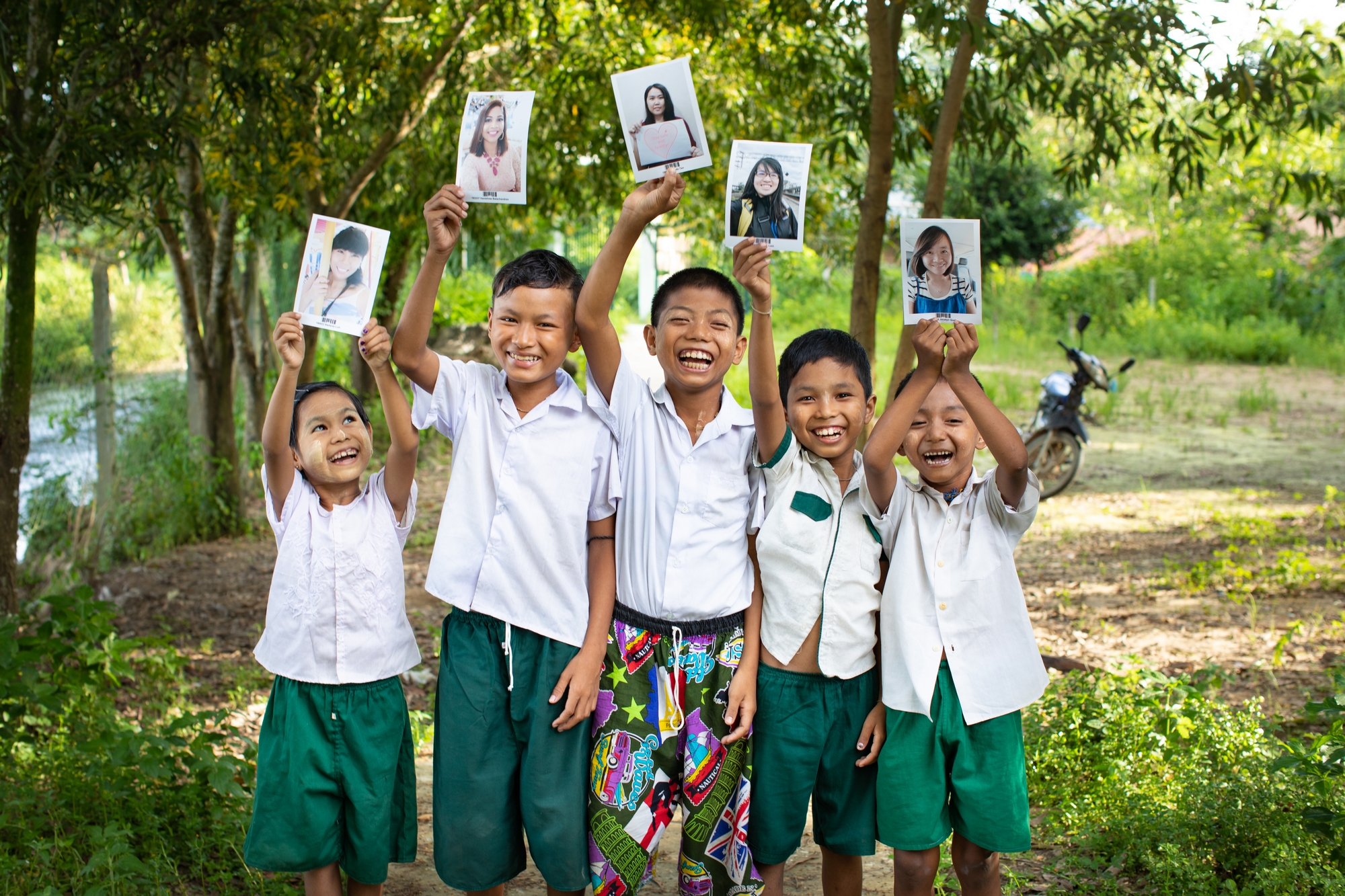
We also celebrate children having a voice and ownership in their own development process. Our innovative Chosen™ invitation to sponsorship is proving to be a positive way to give children greater agency at the beginning of the sponsorship relationship by inviting children to choose their sponsor instead of being chosen themselves. This new way of starting the relationship is proving to be an enriching experience for both sponsors and children and was a breakthrough approach in child sponsorship programmes. Find out more about Chosen™ here.
- Where only certain children in a community are sponsored, stigmatism and community division results
World Vision’s child sponsorship model transforms a child’s future by transforming the community they live in. When you sponsor a child, they benefit from our work to help their community to deliver essentials like clean water, educational opportunities and health services – and so do all the other children in the community. In fact, a study of our child sponsorship programmes in 50 countries found that for every child helped, four more children benefitted too. That’s because all of the children in a sponsored child’s area can use water wells drilled in a community or at the local school, or be part of an after-class reading club, or visit the health centre where a local nurse may have received extra supplies or training – whatever the community development activities run in your sponsored child’s community are, they are designed to help all the children there to break the cycle of poverty. Find out more about how World Vision operates in a community here.
- Sponsorship doesn’t really support a real child; the children are fake
World Vision child sponsorship connects one real sponsor with one real child living in a real community. In that community, our local staff and volunteers work alongside local leaders, community members and families to overcome the barriers to their children’s well-being.
All children who participate in our sponsorship programme have been identified by their local community members to be eligible, based on their personal needs and the needs of the entire community. Before a child is registered for child sponsorship, local staff or volunteers discuss the programme with their parents or caregivers outlining expectations and seeking consent from both the child and the adult who cares for them. Our local staff and volunteers then individually monitor the well-being and progress of that child through regular visits and activities. We send annual reports to sponsors on this progress, along with letters, photos and other updates, so sponsors can see the impact they are making in that child’s life.
As a sponsor, you’re encouraged to get to know your sponsored children through letters or even a visit to their community (when it’s safe to do so) – it’s the best way to hear for yourself about the difference your sponsorship really makes in your sponsored child’s life. We’re also exploring new ways of using social media and other technology to provide more interactive ways for sponsors and their sponsored children to connect – stay tuned!
- All the money sponsors give to child sponsorship is spent on marketing and administration, instead of helping children
World Vision is committed to honouring the promise we make to sponsors, children, families and communities to work together to overcome poverty and injustice. That’s why approximately 80 per cent of the money and resources received by World Vision, including those from our three million sponsors worldwide, is spent in field programmes. Approximately 20 per cent of our resources are used for administration and fundraising, which are critical to maximising the impact of our work and to ensure we are able to sustainably continue it. This includes producing annual reports and independent auditing to provide financial transparency and accountability to our sponsors and the public – you can find these reports here. It also covers the cost of sending you regular photos, videos, annual progress reports, and letters from your sponsored child so that you can hear firsthand the difference that your support makes to your sponsored child’s life.
Research has also confirmed the significant, positive impact that child sponsorship has on the lives of children. A four-year study across nine countries found that both sponsored and non-sponsored children who participated in World Vision’s child sponsorship programme activities were happier, healthier and more hopeful, better educated and better equipped for the future. Sponsorship helps children break free from the cycle of poverty for good – and our rigorous transparency and accountability measures mean you can see the proof.
- Sponsorship is a way to brainwash children into western Christianitan
World Vision is a Christian organisation and our mission is to break the cycle of poverty and transform the lives of vulnerable children in partnership with communities. Because our mission is to help the poorest of the poor, we help based on people’s needs, not their faith or geography. We are motivated to do this because of our faith in Jesus, but we work with people – both children and sponsors – of all cultures, ethnicities, faiths and genders.
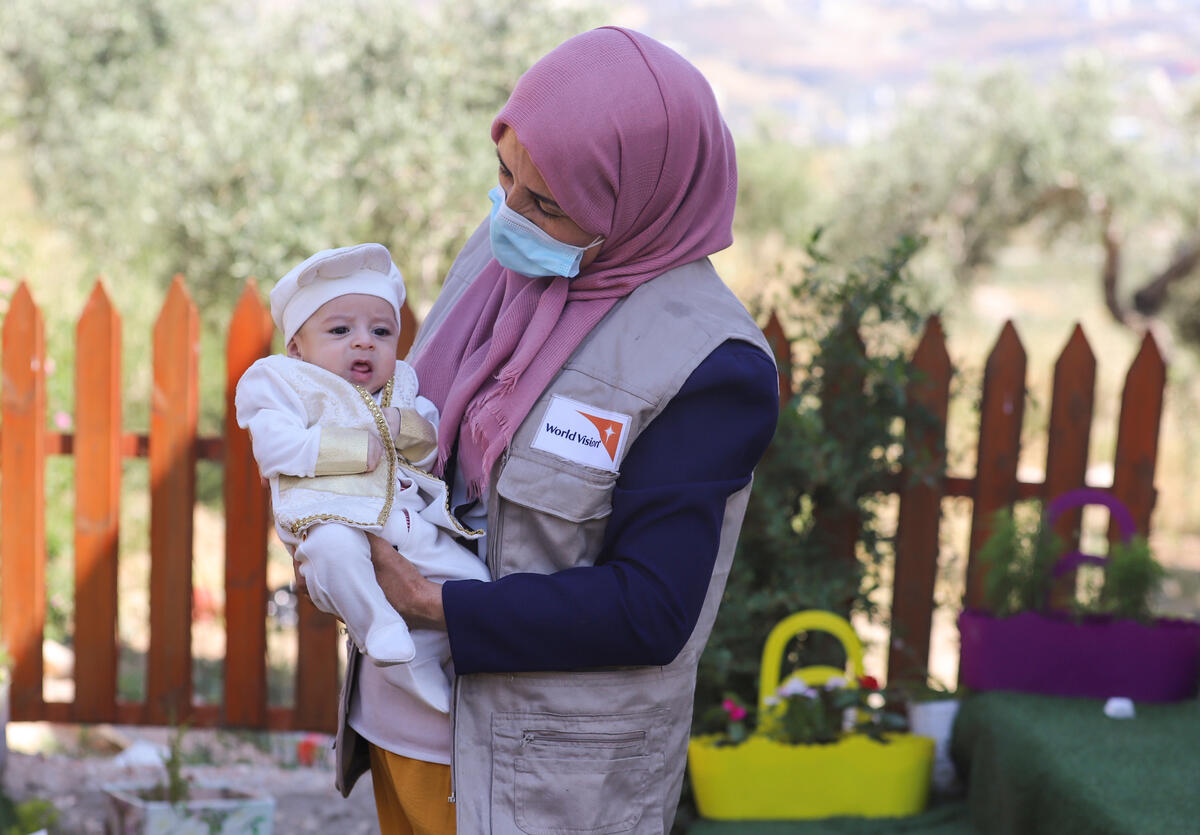
We do not select children for sponsorship based on religion, nor do we require people to listen to religious messages as a condition of working with us. Furthermore, we do not induce or coerce people to accept the Christian faith. We serve the poor in communities of all faiths. We are a signatory to several international agreements that forbid us from excluding anyone from receiving humanitarian aid, regardless of their race, creed or nationality and without adverse distinction of any kind. Aid priorities are set based on need alone.
However, we often work with churches as well as other faith-based community organisations, including Muslim, Hindu, and other organisations, on issues such as human rights and HIV prevention and care, and the protection and education of children. These faith leaders or faith-based organisations are often well-respected, influential voices in their communities, and will continue to care for communities long after our work is completed, and so they are excellent partners in achieving community development.
- Sponsorship causes more harm than good – look at all the aid workers who have exploited and abused people they were supposed to be helping
At World Vision, the care and protection of children is our highest priority and something we take extremely seriously. It is the focus of both our work in communities around the world and our advocacy on behalf of all children, especially the most vulnerable.
Safeguarding screening checks are conducted on all staff and volunteers who have access to children or adults in our projects. We have extensive Child Protection policies and protocols in place to safeguard children and communities in our work. For example, all sponsor visits are organised and chaperoned by local World Vision staff. Protocols control how photos and video recordings of sponsored children are used. We condemn all forms of exploitation or abuse of children or adults and do not tolerate violence, exploitation or abuse against children or vulnerable adults.
World Vision is also committed to tackling the root causes of violence that threaten the safety and well-being of children in the communities where we work. We work alongside local people to strengthen local and national child protection systems. The goal is that governments, civil society, faith-based groups, community stakeholders and children are empowered and working together to create a safe community that cares for and protects all children, especially the most vulnerable.
- There's no point giving to child sponsorship charities because it all gets wasted through corruption in developing countries
World Vision does not tolerate fraud or corruption in its operations and programmes and is committed to the highest standards of legal, ethical and moral behaviour in all we do.
To make sure corruption and fraud is prevented and can be quickly detected, World Vision has a number of checks and balances in place:
- World Vision staff monitor and visit projects and coordinate audits of project finance to ensure that all funds are properly used
- Our management systems prevent any individual from having exclusive rights to spend large amounts of money
- Thorough background checks on staff are conducted
- Local employees are trained to detect and deter fraud
- A whistle-blower system has been established so all World Vision employees, volunteers, contractors, and others can call confidentially if they become aware of any suspicious activity
- Each project and national office undergoes a range of internal and external audit and program quality review procedures
- Reports are sent to the donors who help fund our work, the governments and authorities in the places where we operate, and to our industry peers
- Our financial statements are externally and independently audited and our annual reports are prepared to internationally acknowledged standards of transparency for not-for-profits.
For more than 70 years, World Vision child sponsorship has been working to empower children, their families and communities to break free from the cycle of poverty. There are hundreds of thousands of children – and sponsors – whose lives have been transformed because of it.
There’s never been a better time to sponsor a child. Find out how you could get involved.
